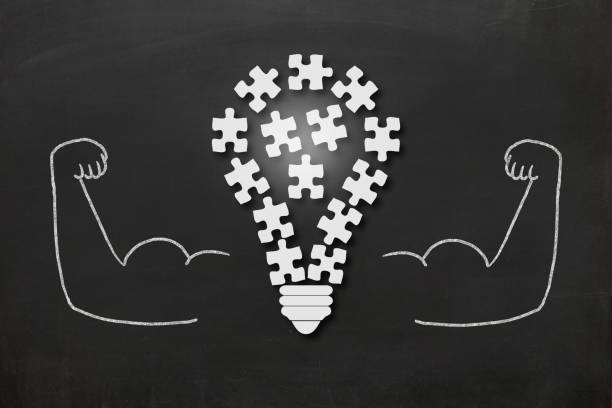On average, Italy takes between 2.5-3 years from filing to grant of patent for industrial inventions excluding processes, chemical products or biotechnological inventions.
The Italian IP box regime is one of the government’s initiatives designed to foster research and development (R&D), while protecting Italy’s “Made in Italy” brand. It offers tax benefits on income derived from exploiting qualifying intellectual property rights.
Italian companies in global patent strategies
Italy’s diverse patent laws and procedures can be quite baffling to foreign companies looking to do business there, especially those looking for patent registration services. Legal systems in Italy operate according to the principle of first-to-file; any inventor who submits their application first becomes the title holder; most copyrighted works will automatically receive protection upon creation or publication, while trademark and design registration is usually necessary.
Patents for industrial inventions grant exclusive rights to work and monetize said invention within Italy’s territorial limits, subject to certain exceptions. However, any right to sell product derived from invention falls away once sold commercially either directly by its proprietor or with their consent in Italy or a member state of either European Union or World Trade Organization; furthermore this right does not extend outside Italy and does not cover products or processes related to said invention.
In order to protect intellectual property in the country, the government has implemented various legislative measures. One such measure is the Intellectual Property Box Regime which offers companies significant fiscal benefits when managing their IP rights wisely. Under this arrangement, income and capital gains derived from licensing of IP rights may be exempted or reduced while R&D expenses can also be deducted.
Italian IP box regulations were recently revised by the tax authority on 15 February 2022, providing more specific requirements to applicants, including providing a technical report from their company R&D function manager.
Italy provides patent holders with twenty years from the filing or priority date to renew their patent, including renewal fees calculated based on how long remains in its term at that point in time. If renewal fees are not paid on time, however, then their patent could lapse and reinstatement can only be reinstated by paying additional renewal fees to reinstate it.

Here is how Italian companies can be involved in global strategies for patents.
Patents
Italian companies can file patents in Italy as well as internationally to protect inventions and innovations. International filings can be done via the Patent Cooperation Treaty or European Patent Convention, which offer a uniform application process across multiple countries.
Patent Portfolio Management.
Italian companies that have a strong focus on research and development may have a large patent portfolio covering a variety of technological areas. These portfolios can be strategically managed to align them with business goals and maximize competitive advantage on the global market.
Patent Licensing & Technology Transfer
Italian firms can license their patented technology to other companies, or enter into agreements for technology transfer. They can generate new revenue streams, and their innovations will reach a wider
Patent Licensing helps with;
- Revenue Generation: For patent holders, licensing can be a significant source of income without having to manufacture or commercialize the patented invention themselves.
- Market Expansion: Licensing allows the patent holder’s technology to reach new markets and industries where the licensee operates, increasing its overall impact.
- Risk Mitigation: For licensees, licensing can be less risky than investing in research and development to create a similar technology from scratch.
- Access to Innovation: Licensees can access cutting-edge technologies, helping them to stay competitive and innovate within their domain.
Technology transfer involves the transfer of knowledge, expertise, and technical know-how from one organization or entity (the transferor) to another (the transferee). This transfer typically includes tangible assets like patents, copyrights, trade secrets, or intangible assets like manufacturing processes, software, or research findings.
Technology transfer can occur in various ways, including:
a. Licensing
As discussed earlier, patent licensing is a form of technology transfer that allows the licensee to utilize the patented technology.
b. Joint Ventures and Strategic Alliances
Companies may form partnerships or alliances to jointly develop and share technologies.
c. Research Collaborations
Universities, research institutions, and private companies often collaborate on research projects, leading to technology transfer.
d. Mergers and Acquisitions
Technology transfer can occur during mergers or acquisitions when a company acquires the intellectual property of another entity.
International Collaboration
Italian companies collaborate with foreign partners often to develop new products and technologies. Patent strategies are crucial in such collaborations to define ownership rights, usage right and revenue sharing arrangements.
Patent Enforcement
Italian firms may be faced with challenges relating to patent infringement on global markets. They may take legal action to protect their interests both in the domestic market and on international markets.
Defensive patenting
Italian firms may engage in defensive patented to protect themselves against potential lawsuits, or to deter competitors who might be considering legal action.
Italian companies should keep an eye on the patent activities of their international competitors. It is important to monitor their patent applications, grant of patents and any potential infringement.
Patent Strategy Alignment with Business Goals
Italian companies’ patent strategies should be aligned with their business goals, including plans for market expansion. Patents can be strategically used to increase market share, stop competitors or to increase the value of a company for potential buyers or investors.
Trade Secrets or Patents
Italian companies have to decide whether they want to protect certain innovations through patents or trade secrets. Trade secrets offer perpetual protection for as long as information is kept secret. Patents, on the other hand, provide limited protection and grant exclusive rights only for a specific period.
The patent strategy of an Italian company can differ significantly depending on its size, industry and goals. Others may focus on open innovation or collaboration, while some companies are focused on building a strong portfolio of patents. Changes in global patent laws, as well as geopolitical influences, can also influence the way Italian companies develop their global patent strategy.
Italian AI patent software assistance invention disclosure submission tool
AI inventions are an integral component of technology development strategies, and protecting these inventions with intellectual property is vital. Copyright and patents provide vital forms of IP protection, protecting AI products from unauthorized reproduction or use; however there may be restrictions to their rights; for instance patents require their inventor to be human, although this requirement has recently seen some movements towards changing this practice.
To protect the success of AI innovations, it is crucial to work with an experienced intellectual property team. Their legal experts can guide you through the jargon and help make an effective case for intellectual property protection of these AI creations. Furthermore, they can guide the patent application process and draft robust applications.
Italian AI patent software assistance patent search
Google provides a free patent search tool, but the process can be time consuming and requires expert knowledge of what patents to search for. Octimine’s AI assistant makes the task simpler by helping to quickly find and categorize patents; additionally it will keep you apprised of relevant global patent publications to your company so as to not miss any significant developments.
Patents can be an invaluable asset for businesses, yet it’s essential that businesses understand all forms of intellectual property (IP). Copyright protects new artistic, literary, dramatic or musical works while patents cover inventions or discoveries which satisfy patentability criteria. Thus, it is vitally important that when developing technology one considers various IP protection options as protection options may exist for each invention or discovery that meets these standards.
Patent applications that do not include enough prior art to support claims may be rejected, so it’s essential that prior art searches be performed before filing your patent application. Doing this will save money and possibly avoid potential lawsuits as well as potential liabilities and costs that might otherwise occur.
PQAI can assist with both full and limited prior art searches, using natural language processing to identify relevant documents and patents. It provides additional insights that keyword searches may miss, such as an understanding of an invention’s claims; additionally it offers patentability scores for each application claim.
Patenting software can be a complex endeavor. Achieve success requires that an invention have both technical characteristics and inventive features; its description must also be clear in both claims and description. Hiring a knowledgeable patent attorney may assist in creating a strong application with high chances of success.
Patents offer protection from unapproved use of your software, yet can be difficult to enforce if not registered properly. Furthermore, your rights could be lost if a competitor develops similar inventions after filing your patent application – thus it’s essential that your filing occurs as quickly as possible in order to avoid this happening.

Italian AI patent software assistance patent grant
Inventors can utilize open access patent tools to find all of the pertinent inspiration and prior work on their inventions, increasing their chances of patent office approval while building their IP portfolio cost effectively.
AI development is an ever-evolving technical field. However, there is still some confusion as to what can be patented. Typically, patentability requires an inventive step – that is a contribution that solves a technical problem not readily evident to someone skilled in its solution – which requires creative thought or original thinking on behalf of the inventor or any person knowledgeable in that area of knowledge.
Copyright is used to protect original works of authorship, including computer program code and data compilations. Companies developing AI should clearly identify and document their intellectual property before entering agreements with third parties to control its usage. Depending on their core technology innovation, patent or copyright protection might also provide necessary protection.
